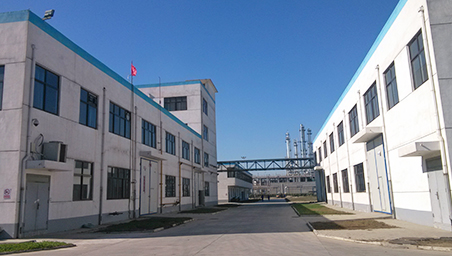
News
дец . 26, 2024 03:34 Back to list
formed as a polymer of amino acids
The Formation of Proteins A Polymer of Amino Acids
Proteins are essential macromolecules that play critical roles in nearly every biological process. They are formed as polymers of amino acids, each uniquely contributing to the structure and function of proteins within living organisms. Understanding how amino acids combine to form proteins is fundamental to biochemistry, molecular biology, and biophysics.
Amino acids are organic compounds that serve as the building blocks for proteins. There are 20 standard amino acids, each characterized by a distinct side chain (R group) that determines its specific properties. These amino acids can be classified into categories based on their chemical nature nonpolar, polar, acidic, and basic. The sequence and composition of these amino acids define the unique characteristics of each protein.
The process of forming proteins begins with the genetic code, which is transcribed from DNA to messenger RNA (mRNA) in a process called transcription. The mRNA serves as a template for protein synthesis during translation, a critical phase that occurs in ribosomes. Transfer RNA (tRNA) molecules transport specific amino acids to the ribosome, where they match with corresponding codons on the mRNA strand. As tRNA molecules deliver amino acids one by one, they are linked together through peptide bonds, forming a long chain known as a polypeptide.
formed as a polymer of amino acids

The primary structure of a protein refers to the sequence of amino acids in the polypeptide chain. This sequence is crucial because it determines how the protein will fold into its secondary and tertiary structures. The secondary structure often takes the form of alpha-helices and beta-sheets, stabilized by hydrogen bonds between amino acids. The tertiary structure represents the overall three-dimensional shape of the protein, influenced by interactions such as hydrogen bonds, ionic bonds, hydrophobic interactions, and disulfide bridges. Some proteins may even form quaternary structures, consisting of more than one polypeptide chain.
The unique folding of proteins is vital for their function. For instance, enzymes, which are proteins that catalyze biochemical reactions, rely on their specific shapes to interact precisely with substrates. Any alteration in the amino acid sequence, known as mutations, can lead to misfolded proteins and result in a loss of function. Such misfolding is implicated in various diseases, including Alzheimer's and cystic fibrosis.
Proteins are involved in countless biological functions, including catalysis, signaling, structure, and transport. For example, hemoglobin is a protein responsible for transporting oxygen in the blood, while antibodies play a crucial role in the immune response by recognizing and neutralizing foreign pathogens. Additionally, structural proteins such as collagen provide support and strength to tissues and organs.
In summary, proteins as polymers of amino acids are fundamental to life. Their formation through transcription and translation showcases the intricate processes of molecular biology. The unique properties of amino acids and their specific sequences lead to varied protein structures and functions. An understanding of protein formation not only enhances our knowledge of biology but also opens avenues for biotechnological advancements and therapeutic interventions for various diseases. In an era of rapid scientific progress, the study of proteins continues to be a frontier for discovery and innovation.
-
OEM Chelating Agent Preservative Supplier & Manufacturer High-Quality Customized Solutions
NewsJul.08,2025
-
OEM Potassium Chelating Agent Manufacturer - Custom Potassium Oxalate & Citrate Solutions
NewsJul.08,2025
-
OEM Pentasodium DTPA Chelating Agent Supplier & Manufacturer High Purity & Cost-Effective Solutions
NewsJul.08,2025
-
High-Efficiency Chelated Trace Elements Fertilizer Bulk Supplier & Manufacturer Quotes
NewsJul.07,2025
-
High Quality K Formation for a Chelating Agent – Reliable Manufacturer & Supplier
NewsJul.07,2025
-
Best Chelated Iron Supplement for Plants Reliable Chelated Iron Fertilizer Supplier & Price
NewsJul.06,2025
